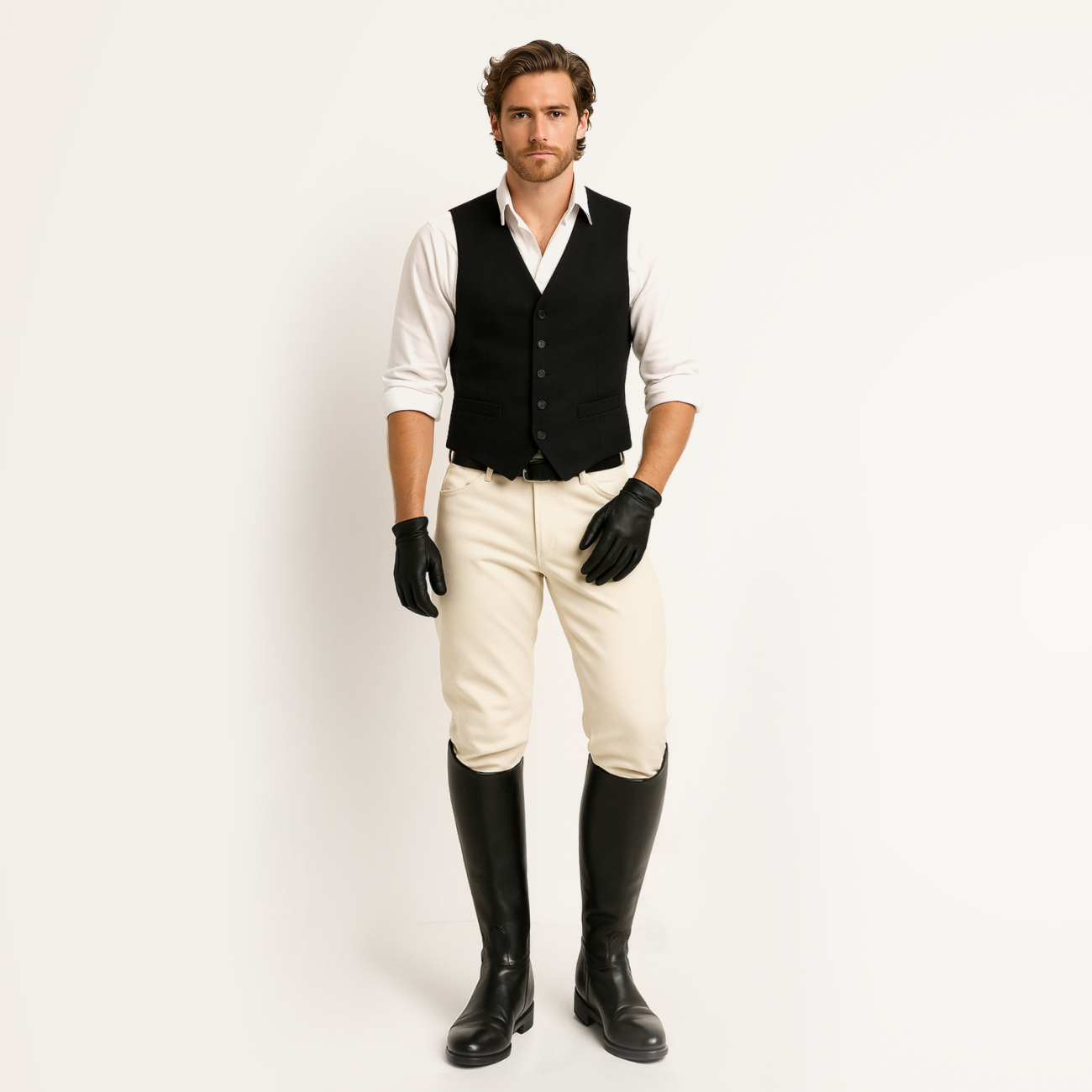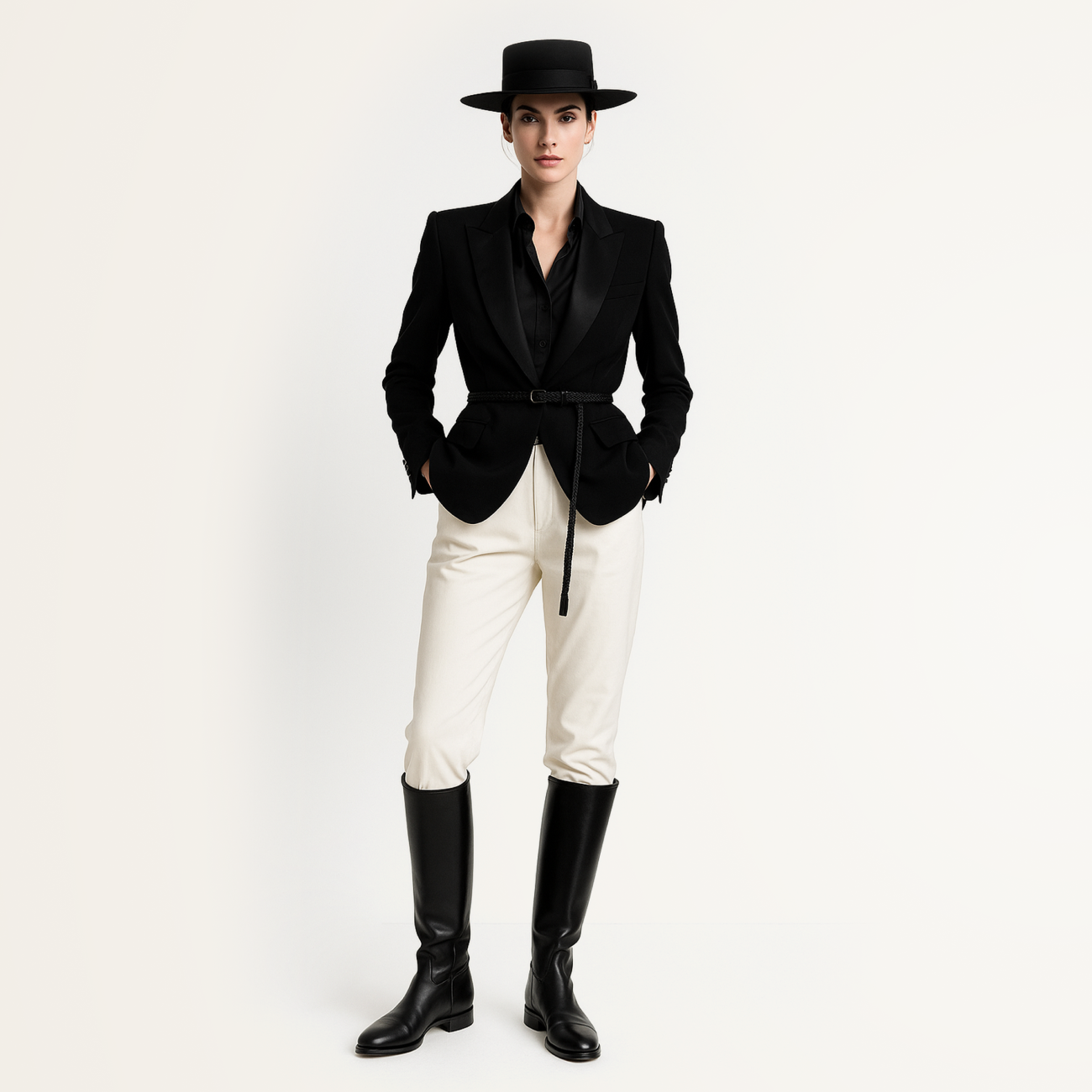Derby
Derby style is the embodiment of dynamism, determination, and self-confidence. It draws inspiration from the world of equestrianism, where every element of clothing serves not only aesthetics but also comfort, protection, and practicality. This style captivates with its simplicity and refinement, as well as the sense of freedom it evokes. It creates a look that symbolizes resilience and purpose, elegantly blending aesthetics with functionality.
History
Equestrian sports, particularly horse racing, gained popularity in Britain as early as the 17th–18th centuries, becoming a favorite pastime of the royal family and the upper classes. Horse racing symbolized not only athletic achievement but also prestige, social status, and power. Since participation in races was initially reserved for the elite—and later opened to wealthy patrons—this significantly influenced derby attire, which was designed to reflect belonging to high society.
Riding clothes were specifically created for comfort and safety in the saddle, which led to the emergence of distinctive wardrobe elements—fitted jackets, trousers tucked into high boots, and protective accessories. Even back then, riding attire stood out for its use of quality materials like wool and leather, and tailored cuts for ease of movement. These elements laid the foundation for derby style, emphasizing the wearer’s status and wealth.
By the early 19th century, as industrialization spread across Britain, equestrian sports began to move beyond aristocratic circles. During this time, derby style started to gain popularity among broader social groups, and fashion took notice of its unique aesthetic. The introduction of tweed and other durable wool fabrics contributed to the evolution of this style—these materials were ideal for an active lifestyle and became favored by urban dwellers.
By the late 19th and early 20th centuries, as major fashion houses began to emerge, derby style served as inspiration for designers. Fashion started borrowing silhouettes and motifs from equestrian wear and incorporating them into everyday collections, adapting them for city life.
In the mid-20th century, many prominent designers turned to derby style and reimagined it in everyday fashion, emphasizing both elegance and practicality. The style became a symbol of nobility and luxury, and its key elements—knee-high boots, tailored blazers, and checkered prints—found their way into both women's and men's wardrobes.
In the post-war years, sportswear gained momentum. The style began to represent both refinement and utility, and derby fashion took on a new meaning: it was no longer just a nod to equestrian sports, but an embodiment of an active lifestyle. This was the beginning of the “lifestyle brand” concept—exemplified by Ralph Lauren, who presented derby style as part of an idealized American life full of elegance, tradition, and success.
Derby style actively incorporates elements of sporting gear: high riding boots, jodhpurs, belted jackets, and dense, body-defining fabrics designed for both aesthetic appeal and practical use. Modern interpretations of this style have been adapted for everyday wear, adding comfort, structure, and versatility to the look.
Many brands continue to incorporate derby-inspired motifs in their collections, preserving the spirit of the style while adding contemporary touches. On the runway, elements of derby fashion appear in a variety of interpretations, allowing this classic to integrate seamlessly into modern wardrobes.
Signature elements of the style
Color palette
Key colors include brown, navy, beige, white, and black.
Prints
Classic derby prints feature checks (tartan, tattersall, and glen plaid) and stripes (newmarket stripe).
Textures
Derby style places a strong emphasis on high-quality materials such as tweed, wool, cotton, leather, and suede. Metal accents like buckles on belts and boots are also characteristic.
Cuts & silhouette
Derby style is defined by tailored cuts that highlight the figure and fitted lines that allow freedom of movement. Jackets and blazers are often slightly cropped with reinforced shoulders, creating a sharp silhouette.
Wardrobe essentials
- Derby Boots / Riding Boots — Tall leather boots with a low heel and wide shaft.
- Slim Breeches or Jodhpurs — Cropped, form-fitting trousers at the hips that allow for ease of movement and create a signature silhouette.
- Redingote or Tailored Jacket — A classic jacket with emphasized shoulders and a fitted waist, often made of tweed or wool.
- Vest — Wool or leather vests that add layering and structure to the outfit.
- Accessories — Neck scarves, ties, gloves, and headwear such as caps and riding hats.
Substyles
Email: support@belt-app.com


















